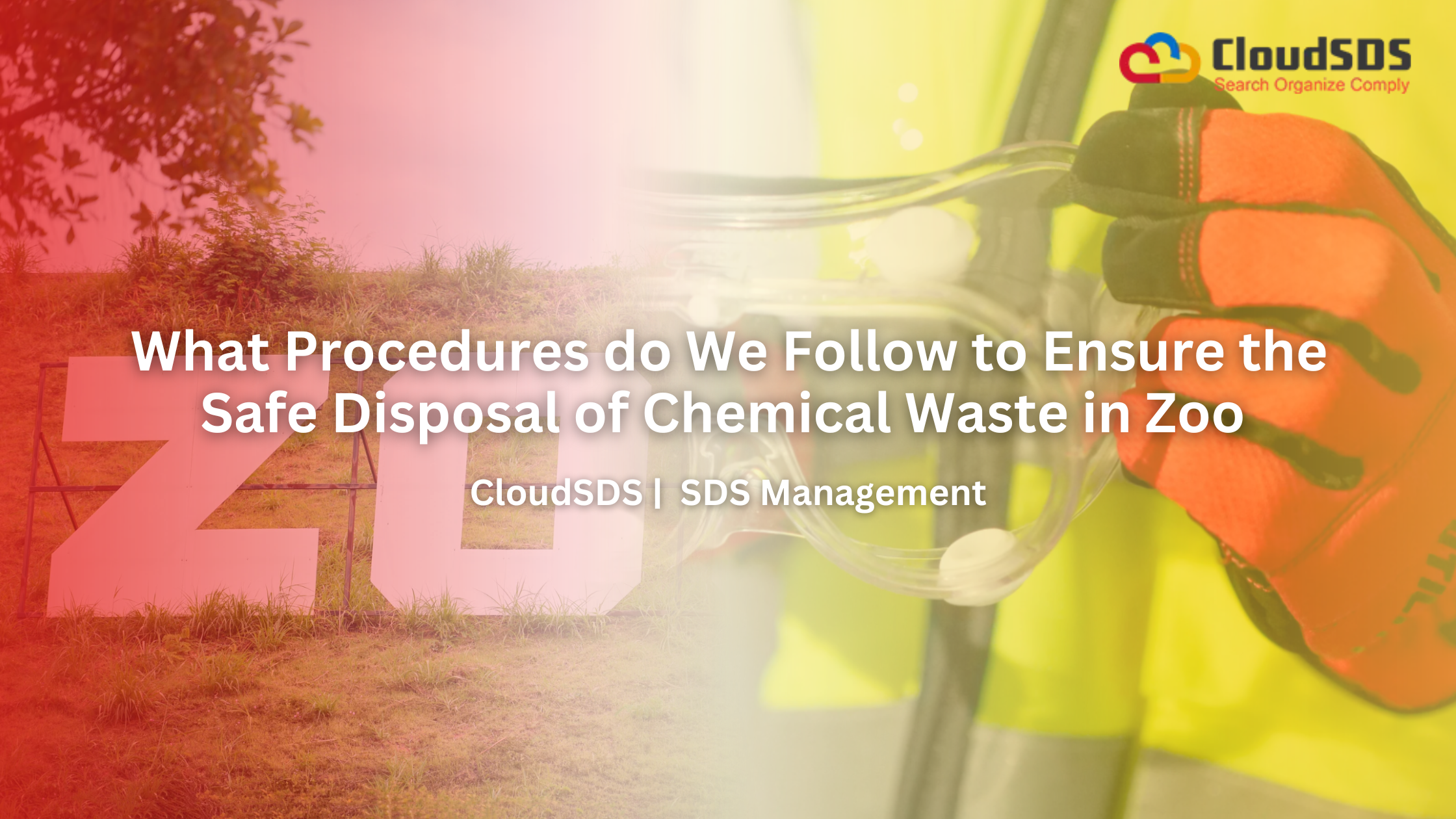Zoos are not exceptional in using chemicals. Chemical waste in zoos is a problem these days. It is essential to dispose of the chemical waste of the Zoo safely and securely as it is a matter of the health of animals, employees, and visitors. Environmental protection and regulatory compliance are also required. Every Zoo uses a variety of chemicals for cleaning, disinfection, pest control, water treatment, and veterinary care. If these chemicals are not managed properly, they can pose significant risks. This blog outlines the step-by-step procedures and best practices for the safe disposal of chemical waste in zoos, ensuring a sustainable and secure environment for all.
Understanding the Types of Chemical Waste in Zoos
It’s essential to identify the types of chemical waste typically found in a Zoo:
- Veterinary Waste: Medications, antibiotics, anesthesia gases, and sharps are used in animal healthcare.
- Pesticides and Herbicides: These chemicals are used in managing vegetation and controlling pests in animal enclosures.
- Cleaning Chemicals: Disinfectants, detergents, and bleaching agents are used for hygiene and disease control.
- Research Laboratory Waste: Another type of chemical is used in scientific studies, genetic sampling, or diagnostic testing.
- Paints, Solvents, and Lubricants: These chemicals are used in the maintenance of Zoo infrastructure.
Each of these waste types has its unique disposal requirements, and mismanagement can lead to soil, water, and air contamination.
Regulatory Framework and Compliance
Every Zoo authority must comply with national and international environmental and health regulations concerning hazardous waste management. These are:
- EPA or Environmental Protection Agency standards in the U.S.
- Hazardous Waste Regulations 2005 in the UK.
Zoo authorities should have Environmental Health and Safety (EHS) personnel or a team responsible for ensuring compliance and updating procedures based on new regulations.
Safe Handling and Disposal of Chemical Waste in Zoological Facilities
1. Waste Identification and Segregation
The first step is identifying and classifying chemical waste:
- Label all waste containers clearly with the name of the chemical and hazard type.
- Use color-coded bins for different types of chemical waste.
- Separate incompatible chemicals to prevent dangerous reactions.
Proper segregation protects from cross-contamination and simplifies downstream disposal processes.
2. Staff Training and Safety Protocols
All Zoo personnel, especially those work in veterinary clinics, laboratories, and maintenance, should undergo regular training in:
- Safe chemical handling procedures.
- The usage of Personal Protective Equipment (PPE), hearing protection, gloves, and face shields is important.
- Spill response and emergency protocols.
- Proper labeling and documentation.
A well-trained staff is the initial defense against accidents and contamination.
3. Storage of Chemical Waste
Chemical waste must be preserved securely before disposal:
- Zoo personnel should use leak-proof, corrosion-resistant containers.
- Chemical waste should be stored in designated, ventilated areas with spill containment measures.
- It is necessary to keep Safety Data Sheets (SDS) accessible for all chemicals.
Storage areas should be away from animal enclosures, water sources, and visitor pathways to minimize risks.
4. Waste Minimization Strategies
To lower the volume of chemical waste, Zoo authorities should:
- Use eco-friendly alternatives and opt for biodegradable cleaning agents and non-toxic pest control methods.
- It is necessary to purchase chemicals in small quantities to avoid excess.
- Starting using chemical inventory management systems to monitor usage and expiry dates is essential.
- Minimizing waste at the source reduces the burden on disposal systems and lowers environmental impact.
5. Effective and Safe Waste Management Methods
Every chemical acts differently. That’s why; depending on the type of chemical waste, different disposal methods may be used:
Disposal Method | Description | Suitability |
| Incineration
| High-temperature destruction of hazardous chemicals
| Highly toxic, non-recyclable chemicals.
|
| Secure Landfill | Engineered landfills for non-hazardous chemical waste
| Non-hazardous, stable chemicals.
|
| Licensed Disposal | Hiring certified chemical waste disposal companies | All hazardous chemical wastes. |
| Recycling/Recovery | Distillation or recovery of reusable chemicals (e.g., solvents, metals) | Recyclable chemicals. |
| Encapsulation | Sealing waste in containers for long-term storage | Difficult-to-treat chemical waste. |
6. Visitor and Animal Safety
- Restricted Access: Zoo authorities should block off those particular areas that are being treated with chemicals and post visible warning signs to prevent accidental exposure to visitors and animals.
- No Unattended Chemicals: Zoo employees should not leave chemical containers or equipment unattended in public or animal-accessible areas.
- Residue Management: It is necessary to ensure that all chemical residues are removed or neutralized before reopening areas to the public or animals.
Emergency Preparedness and Spill Management
Despite applying the best procedures, accidents may occur. Zoo authorities must be equipped to handle chemical spills effectively:
- Spill kits should be available in all high-risk locations.
- Emergency response plans must be developed and regularly practiced through drills.
- First aid and decontamination stations should be strategically located.
A quick and effective response to spills can prevent injury, animal exposure, and environmental damage.
Monitoring and Auditing
Zoo authorities must follow regular audits. It will ensure that chemical waste procedures are followed properly. These include:
- The EHS teams carry out internal audits.
- Analyzing compliance and identifying flaws by third parties.
- Record-keeping and reporting for transparency and accountability.
Audit findings should be used to improve policies and training programs continually.
Conclusion
The above-discussed guidelines have stated that the Safe disposal of chemical waste in zoos is a multi-step process involving identification, segregation, secure storage, staff training, proper handling, treatment, and disposal through authorized channels. By following those procedures, zoo authorities can protect animal welfare, staff and visitor health, and the environment. They can maintain compliance with all relevant regulations because the proper way to accurately safe chemical waste disposal in zoo sectors is not only a procedure but also an ethical commitment to the environment and animal, and human lives.

Leave A Comment